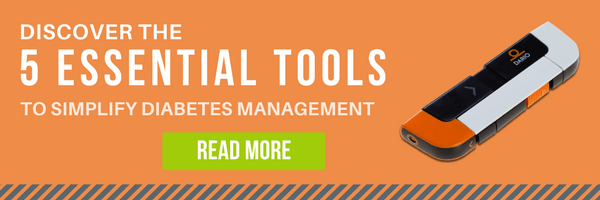What is Prediabetes?
What it means to have prediabetes and what to do next
 By Susan B. Sloane, BS, RPh, CDE
By Susan B. Sloane, BS, RPh, CDE
Many of us have heard the term prediabetes, but what exactly does it mean? Prediabetes is defined by an HbA1c level of above 5.7 or a fasting blood glucose level of over 100mg/dl (5.6 mmol/L), according to the American Diabetes Association. If you are diagnosed with prediabetes, it means that your body has trouble handling glucose effectively. This is due to a combination of factors including problems with insulin production. There is a direct correlation between weight gain and the development of what is called insulin resistance, where the body cannot properly utilize insulin efficiently enough to keep blood sugars at normal levels.1 There are, however, still those people that can develop prediabetes with no significant weight gain.
If you have a family history of diabetes or you have recently gained a lot of weight and are concerned about the possibility of developing diabetes or prediabetes, you can check your blood sugars at home to see how you are doing.
The best time to test blood sugars to catch sudden surges in blood glucose that may be abnormal is an hour and a half to two hours after your largest meal. These are among the first blood sugars that start to rise at the beginning stages of diabetes. In a non-diabetic individual, your post-meal blood glucose should be under 140 mg/dl (7.8 mmol/L). Check with your healthcare provider when you see possibly abnormal blood glucose readings. If you are seeing funny numbers, check with your doctor before jumping to conclusions. Many factors can effect your readings.
In general, there are no obvious symptoms when you have prediabetes. This is why testing your HbA1c and blood glucose periodically is important. If you get a diagnosis of prediabetes, you can start to take measures to potentially prevent or delay the development of Type 2 Diabetes.
The main goal is to take the pressure off the pancreas so it doesn’t burn out or lose the ability to produce insulin adequately. Even patients who don’t have weight to lose, can benefit by adopting a healthy diet plan. A healthy diet includes avoiding concentrated sugars and dense foods such as cookies, pastries, white bread, white rice, and white pasta. It doesn’t mean you can never have these food, just on moderation. Fiber, including fresh vegetables and grains, is also an important component of a well-balanced diet.
Although symptoms of diabetes include excess hunger, urination, and thirst, if you have prediabetes you may not experience any of these symptoms, because blood sugars are not high enough yet. Therefore it is important to get your HbA1c tested. You could possibly prevent Type 2 Diabetes from occurring or at the very least delay the onset of full blown Type 2 Diabetes by making some important lifestyle changes.
If you are diagnosed with prediabetes, you should not only adopt healthy eating habits, but also begin to live a healthier lifestyle. If you are a smoker, quit smoking. Begin a regular exercise program. Exercise takes on many forms and does not always involve a trip to the gym. You can do yoga, walk the dog, ride a bike, or even clean your house for exercise.
The CDC has adopted a new program for people with prediabetes or those who are at risk for diabetes to help you get educated and start making important changes to potentially prevent Type 2 Diabetes.2 Potentially, 58 percent of people with prediabetes could prevent it from occurring by utilizing this program which has patients work with life coaches. It is an important initiative by the CDC and will likely save lives. Let’s get healthy together!

About Susan Sloane
Susan B. Sloane, BS, RPh, CDE, has been a registered pharmacist for more than 29 years and a Certified Diabetes Educator for most of her career. Her two sons were diagnosed with diabetes, and since then, she has been dedicated to promoting wellness and optimal outcomes as a patient advocate, information expert, educator, and corporate partner.
Susan has published numerous articles on the topic of diabetes for patients and health care professionals. She has committed her career goals to helping patients with diabetes stay well through education.
<b>Medical Disclaimer</b>
The articles provided on this website are for informational purposes only. In addition, it is written for a generic audience and not a specific case; therefore, this information should not be used for diagnostic or medical treatment. This site does not attempt to replace the patient-physician relationship and fully recommends the reader to seek out the best care from his/her physician and/or diabetes educator.
- http://www.diabetes.org/diabetes-basics/diagnosis/
- https://www.cdc.gov/diabetes/prevention/index.html
DAR -0070 RevA 06/2019









